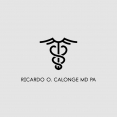Controlling Your Blood Pressure Through Lifestyle
What does my lifestyle have to do with my blood pressure? — The things you do and the foods you eat have a big effect on your blood pressure and your overall health. Following the right lifestyle can:
Lower your blood pressure or keep you from getting high blood pressure in the first place
Reduce your need for blood pressure medicines
Make medicines for high blood pressure work better, if you do take them
Lower the chances that you'll have a heart attack or stroke, or develop kidney disease
Which lifestyle choices will help lower my blood pressure? — Here's what you can do:
Lose weight (if you are overweight)
Choose a diet rich in fruits, vegetables, and low-fat dairy products, and low in meats, sweets, and refined grains
Eat less salt (sodium)
Do something active for at least 30 minutes a day on most days of the week
Limit the amount of alcohol you drink
If you have high blood pressure, it's also very important to quit smoking (if you smoke). Quitting smoking might not bring your blood pressure down. But it will lower the chances that you'll have a heart attack or stroke, and it will help you feel better and live longer.Start low and go slow — The changes listed above might sound like a lot, but don't worry. You don't have to change everything all at once. The key to improving your lifestyle is to “start low and go slow.” Choose 1 small, specific thing to change and try doing it for a while. If it works for you, keep doing it until it becomes a habit. If it doesn't, don't give up. Choose something else to change and see how that goes.Lose weight — When people think about losing weight, they sometimes make it more complicated than it really is. To lose weight, you have to either eat less or move more. If you do both of those things, it's even better. But there is no single weight-loss diet or activity that's better than any other. When it comes to weight loss, the most effective plan is the 1 that you'll stick with.Improve your diet — There is no single diet that is right for everyone. But in general, a healthy diet can include:
Lots of fruits, vegetables, and whole grains·
Some beans, peas, lentils, chickpeas, and similar foods
Some nuts, such as walnuts, almonds, and peanuts
Fat-free or low-fat milk and milk products
Some fish
To have a healthy diet, it's also important to limit or avoid sugar, sweets, meats, and refined grains. (Refined grains are found in white bread, white rice, most forms of pasta, and most packaged “snack” foods.)Reduce salt — Many people think that eating a low-sodium diet means avoiding the salt shaker and not adding salt when cooking. The truth is, not adding salt at the table or when you cook will only help a little. Almost all of the sodium you eat is already in the food you buy at the grocery store or at restaurants (figure 1).Become more active — If you want to be more active, you don't have to go to the gym or get all sweaty. It is possible to increase your activity level while doing everyday things you enjoy. Walking, gardening, and dancing are just a few of the things that you might try. As with all the other changes, the key is not to do too much too fast. If you don't do any activity now, start by walking for just a few minutes every other day. Do that for a few weeks. If you stick with it, try doing it for longer. But if you find that you don't like walking, try a different activity.Drink less alcohol — If you are a woman, do not have more than 1 “standard drink” of alcohol a day. If you are a man, do not have more than 2. A “standard drink” is:
A can or bottle that has 12 ounces of beer
A glass that has 5 ounces of wine
A shot that has 1.5 ounces of whiskey
Where should I start? — If you want to improve your lifestyle, start by making the changes that you think would be easiest for you. If you used to exercise and just got out of the habit, maybe it would be easy for you to start exercising again. Or if you actually like cooking meals from scratch, maybe the first thing you should focus on is eating home-cooked meals that are low in sodium.FIGURE 1 Sources of Sodium in your diet
